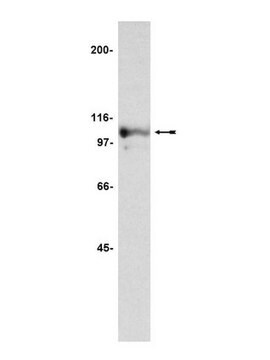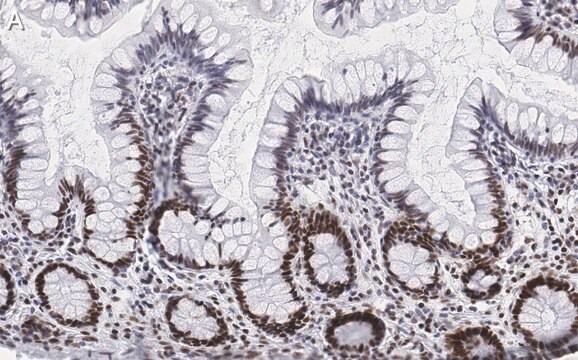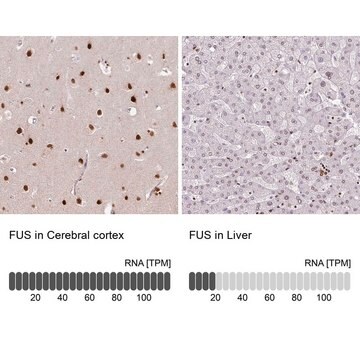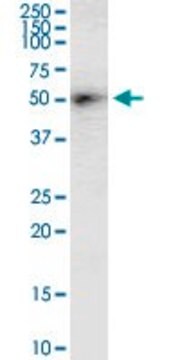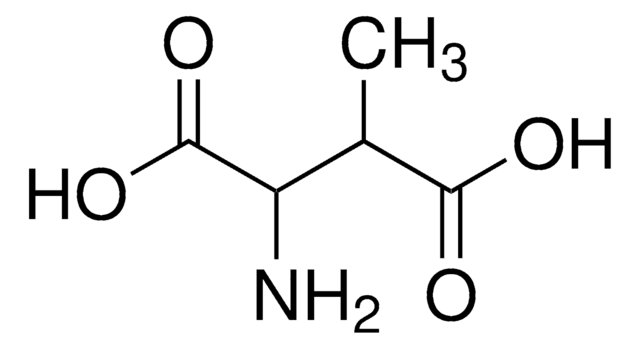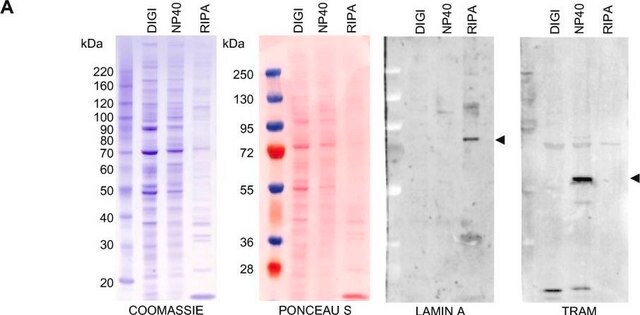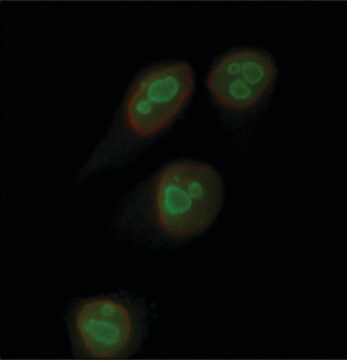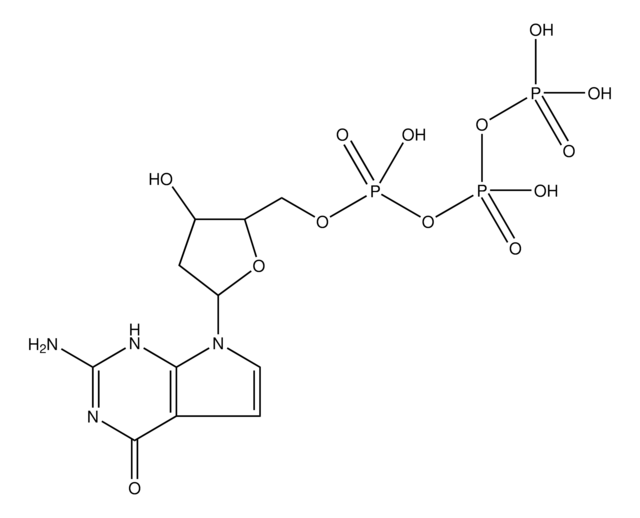General description
Anti-Nucleolin is produced in rabbit using as immunogen a synthetic peptide of human nucleolin with C-terminal added cysteine conjugated to KLH. Nucleolin contains a specific bipartite nuclear localization signal sequence and three different structural domains. The N-terminal domain comprises of highly acidic regions separated by basic sequences and contains multiple phosphorylation sites. The central domain contains four RNA-binding domains (RBD or RRM) and the C-terminal domain (GAR or RGG) is rich in glycine, arginine, and phenylalanine residues. N and C terminal domains are involved in protein-protein interaction whereas the central domain is involved in specific interactions with nucleic acids. Nucleolin is mainly localized in the nucleus and at the cell surface of cultured tumor cells and endothelial cells of angiogenic vessels in vivo.
Nucleolin, also known as C23, is the major nucleolar protein of exponentially growing eukaryotic cells. It is a ubiquitous conserved multi-domain phosphoprotein found in all vertebrate species. Nucleolin is a multifunctional protein involved in most steps of ribosome biogenesis. It has been implicated in chromatin structure, rDNA transcription, rRNA maturation, ribosome assembly, cytokinesis, nucleogenesis, cell proliferation and growth, and nucleo-cytoplasmic transport.
Rabbit polyclonal anti-Nucleolin antibody recognizes human, mouse, and rat nucleolin. Detection of the nucleolin band by immunoblotting is specifically inhibited with the immunizing peptide.
Immunogen
synthetic peptide corresponding to amino acid residues 2-17 of human nucleolin with C-terminal added cysteine, conjugated to KLH. The corresponding sequence differs by 4 amino acids in rat and mouse nucleolin and by 1 amino acid in the rat homolog protein NRP (nucleolin related protein).
Application
Applications in which this antibody has been used successfully, and the associated peer-reviewed papers, are given below.
Western Blotting (1 paper)Rabbit polyclonal anti-Nucleolin antibody is used to tag nucleolin for detection and quantitation by immunocytochemical and immunohistochemical (IHC) techniques such as immunoblotting (105 kDa), immunoprecipitation, and immunofluorescence. It is used as a probe to determine the presence and roles of nucleolin in ribosome maturation, cytokinesis, nucleogenesis, cell proliferation and growth, and nucleo-cytoplasmic transport in exponentially growing eukaryotic cells.
Biochem/physiol Actions
Nucleolin also exhibits auto degradation, DNA and RNA helicase activities, and DNA-dependent ATPase activity. Nucleolin activities may be regulated by proteolysis, methylation, ADPribosylation and phosphorylation by several kinases, including casein kinase II (CK2), p34cdc2 and protein kinase C. Nucleolin might function as a cell surface receptor for lipoproteins, viruses, extracellular matrix, growth factors and other molecules. It interacts with telomerase, which is critical for the nucleolar localization of telomerase.
Physical form
Solution in 0.01 M phosphate buffered saline, pH 7.4, containing 15 mM sodium azide.
Disclaimer
Unless otherwise stated in our catalog or other company documentation accompanying the product(s), our products are intended for research use only and are not to be used for any other purpose, which includes but is not limited to, unauthorized commercial uses, in vitro diagnostic uses, ex vivo or in vivo therapeutic uses or any type of consumption or application to humans or animals.
